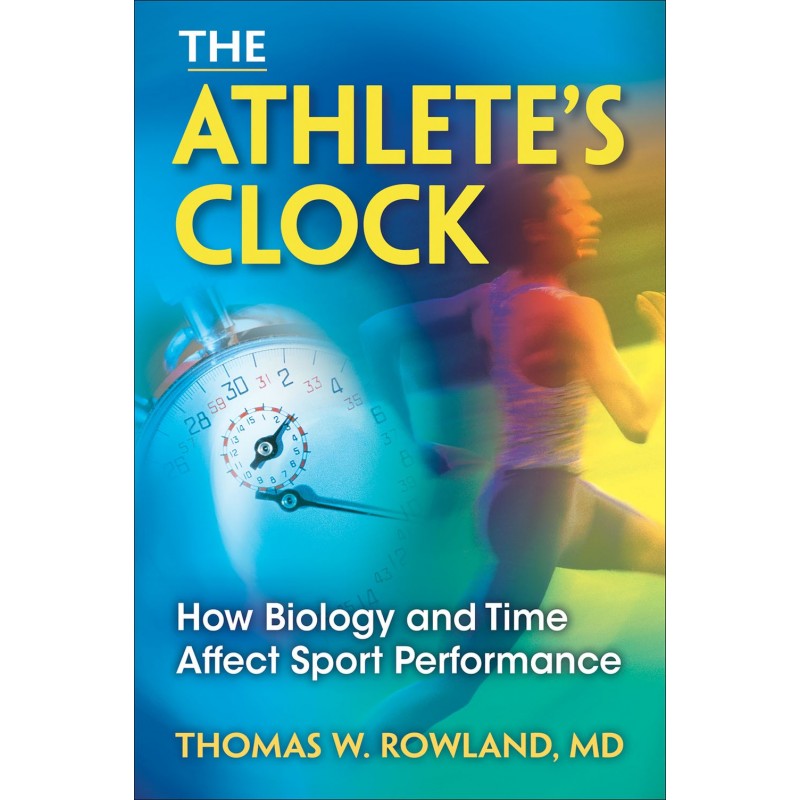- Reduced price

Order to parcel locker

easy pay


 Delivery policy
Delivery policy
Choose Paczkomat Inpost, Orlen Paczka, DHL, DPD or Poczta Polska. Click for more details
 Security policy
Security policy
Pay with a quick bank transfer, payment card or cash on delivery. Click for more details
 Return policy
Return policy
If you are a consumer, you can return the goods within 14 days. Click for more details
The Athlete’s Clock:: How Biology and Time Affect Sport Performance offers an engaging, interdisciplinary consideration of some of the most compelling questions in sport and exercise science. This unique text takes a broad look at the physiological clock, offering students, researchers, coaches, and athletes a unique approach to understanding how various aspects of time affect sport performance.
The Athlete’s Clock explores the ways in which time and its relationship to athletic effort can optimize sport performance. Readers can investigate challenging questions such as these::
•If physiological responses to training vary rhythmically throughout the day, what is the optimal time of day for training?
•If a coach thinks that a high stroke count leads to a better time in a particular swim event, should the athlete go with it? Or is it better to stick to a more intuitively normal cadence?
•Do endurance athletes consciously control their pacing, or are they under the control of unconscious processes within the central nervous system?
•In what ways do aging and rhythmic biological variations over time control athletic performance?
•Can athletes use cognitive strategies to subdue or overcome limits imposed by biological factors out of their control?
Readers will find information on the mechanisms by which time influences physiological function—such as running speeds and muscle activation—and how those mechanisms can be used in extending the limits of motor activity. Chapter introductions cue readers to the ideas addressed in the chapter, and sidebars throughout present amusing or unusual examples of sport and timing within various contexts. In addition, take-home messages at the end of each chapter summarize important findings and research that readers may apply in their own lives.
Addressing one of the most intriguing questions in sports, a conversational interview with athlete development expert, anthropologist, and sport scientist Bob Malina covers the timely topic of sport identification and talent development. The interview is an engaging discussion of how and when talent identification should take place and how talent development for young, promising athletes might proceed. The text also considers how time throughout one’s life span alters motor function, particularly in the later years.
The Athlete’s Clock:: How Biology and Time Affect Sport Performance blends physiological, psychological, and philosophical perspectives to provide an intelligent and whimsical look at the effects of timing in sport and exercise. This text seeks to provoke thought and further research that look at the relationship between biology, time, and performance as well as an understanding of and appreciation for the intricacies of human potential.
Data sheet
Chapter 1. Who’s in Charge Here? Setting the Race Pace
Chapter 2. Marching to the Same Drummer: Cadence in Endurance Events
Chapter 3. Dragsters, Tiger Beetles, and Usain Bolt: Time and Speed
Chapter 4. Circadian Rhythms and Sport Performance
Chapter 5. It’s All in the Timing: Keeping Your Eye on the Ball
Chapter 6. Peaks and Valleys: The Development of Athletic Skill—A Conversation
With Bob Malina
Chapter 7. Over The Hill: Aging and Sport Performance
Reference: 104350
Author: Mel Mupparapu
